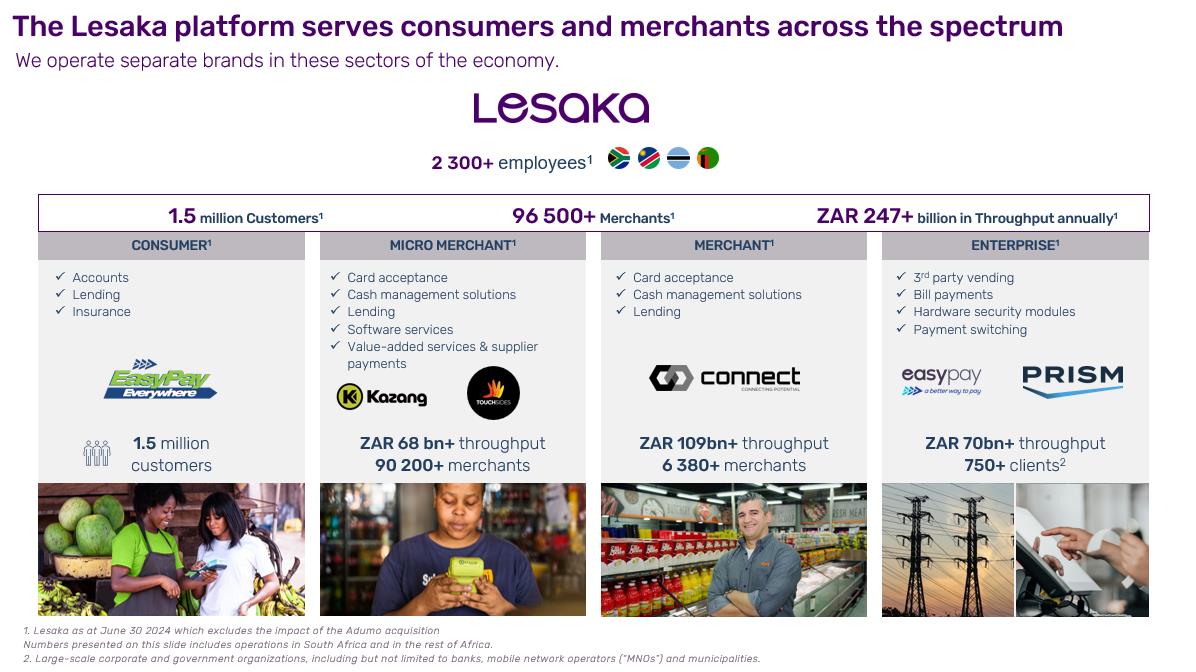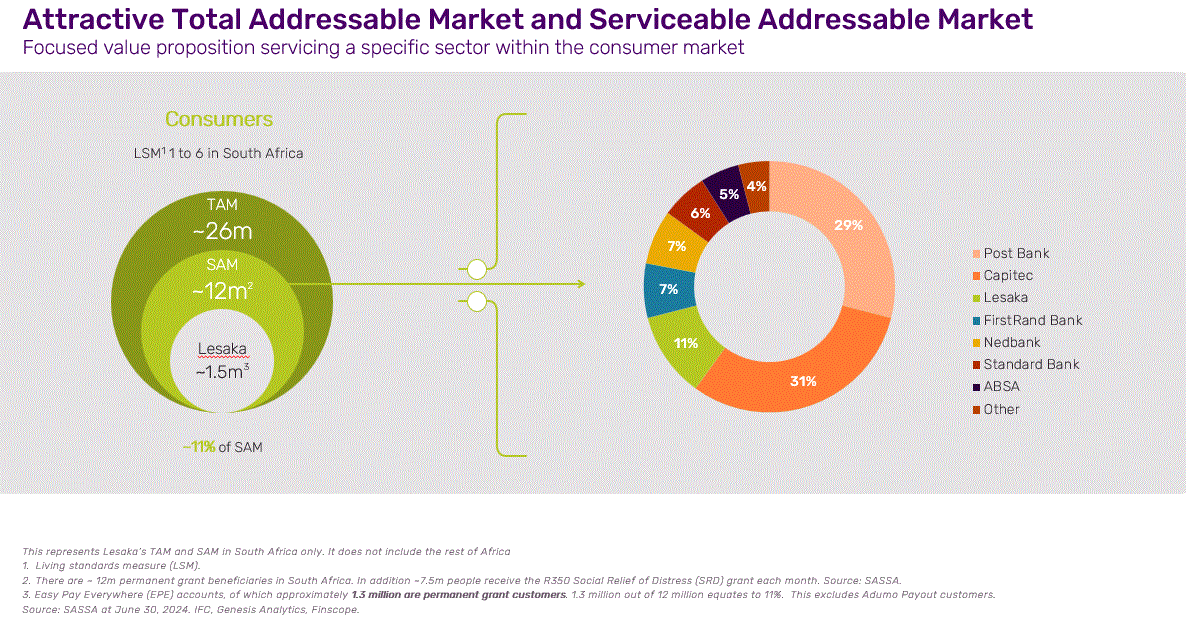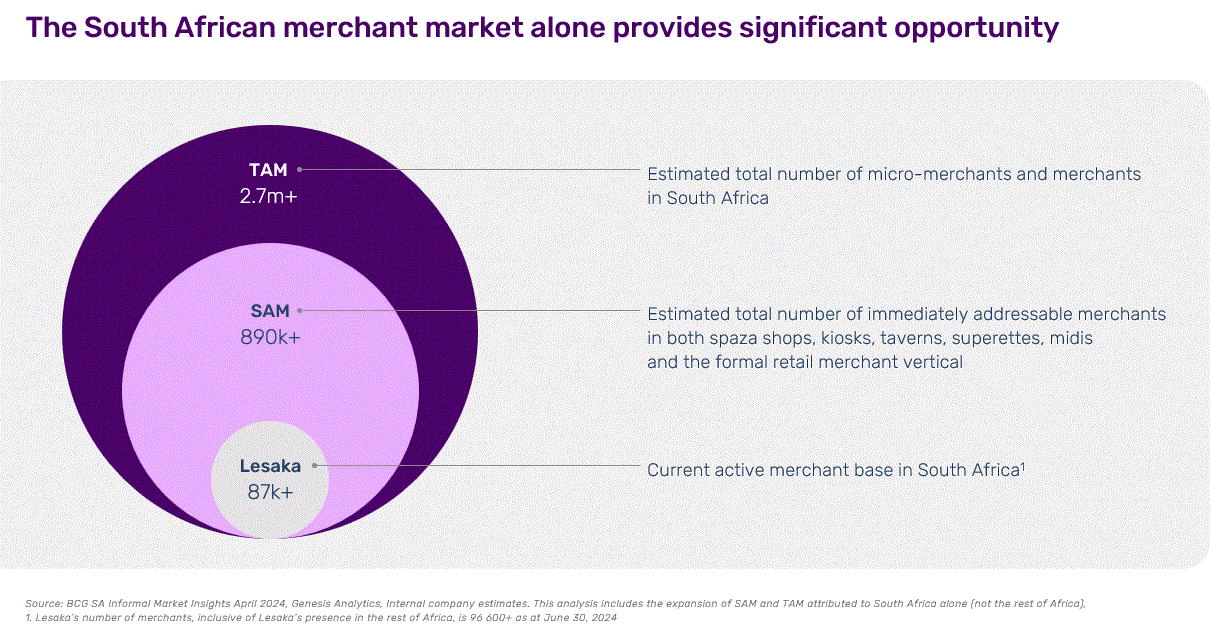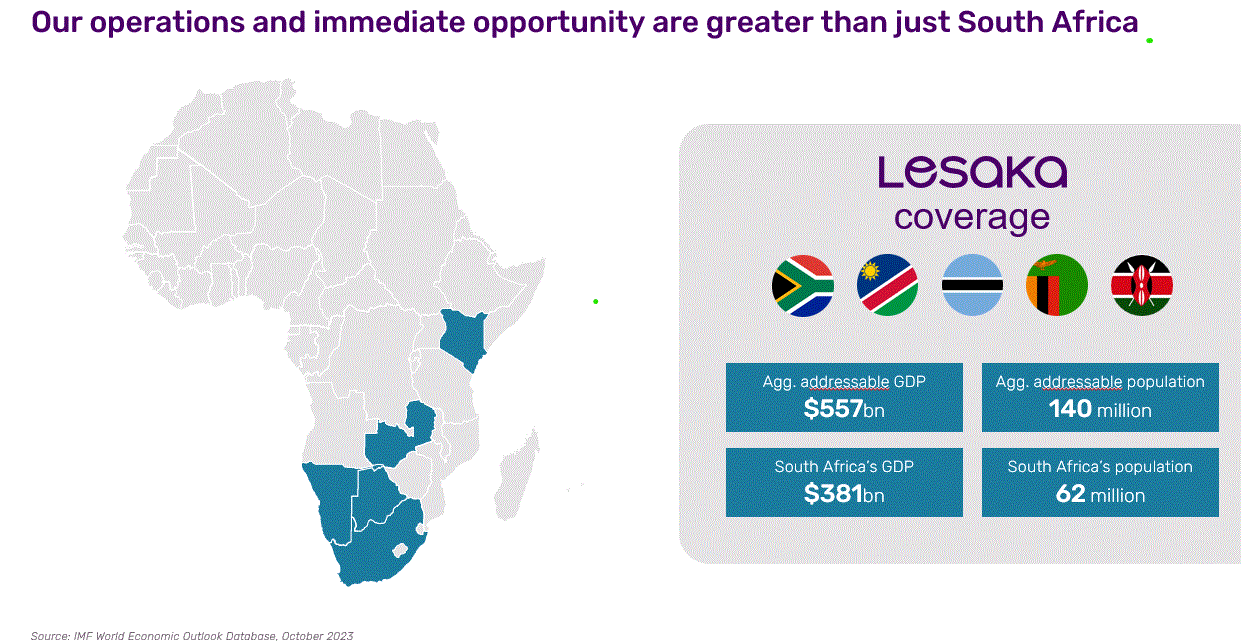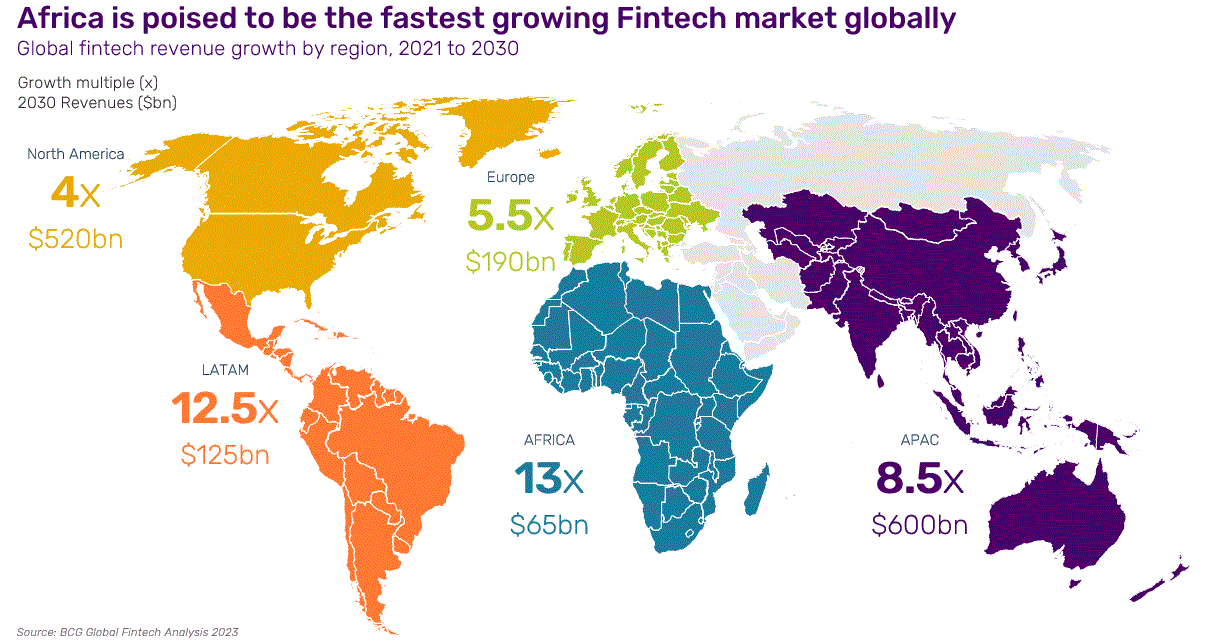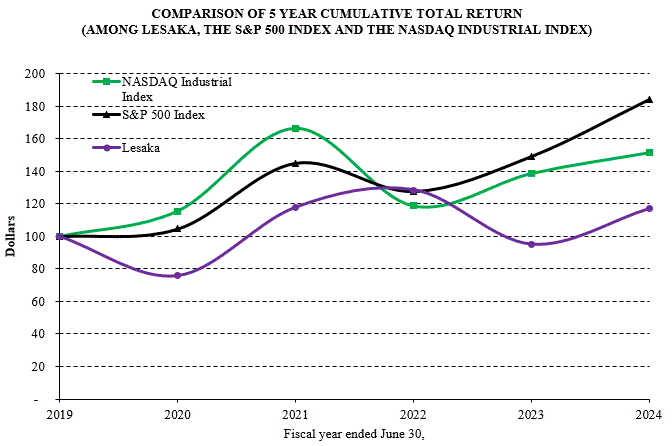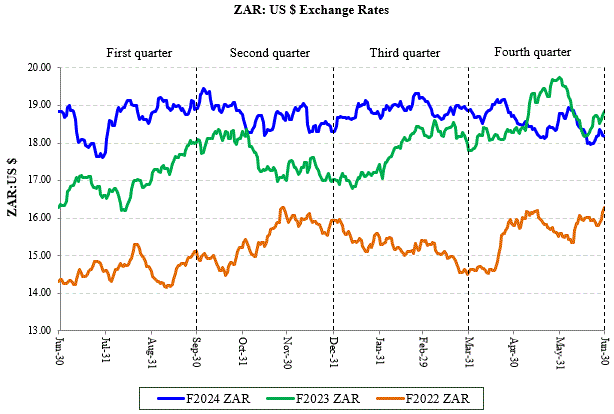LESAKA TECHNOLOGIES, INC.
CONSOLIDATED STATEMENT
OF CASHFLOWS
for the years ended June 30, 2024, 2023 and 2022
F-11
2024
2023
2022
(In thousands)
Cash flows from operating activities
Net loss
$
(17,440)
$
(35,074)
$
(43,876)
Adjustments to reconcile net loss to net cash used in operating activities:
Depreciation and amortization
23,665
23,685
7,575
Impairment loss (Note 10)
-
7,039
-
Movement in allowance for credit losses
5,158
6,495
1,551
Fair value adjustment related to financial liabilities
(853)
(20)
(466)
(Profit) Loss on disposal of property, plant and equipment
(305)
(468)
(2,849)
Stock-based compensation charge (Note 17)
7,911
7,309
2,962
Gain on disposal of equity securities (9)
-
-
(720)
Loss on disposal of equity-accounted investment (9)
-
205
376
Interest payable
1,119
5,069
9
Facility fee amortized (Note 12)
443
864
251
Loss from equity-accounted investments (Note 9)
1,279
5,117
3,649
Movement in allowance for doubtful loans to equity-accounted investments
(250)
-
38
Dividends received from equity-accounted investments
95
42
155
Changes in net working capital
(Increase) Decrease in accounts receivable (Note 20)
(10,873)
(1,687)
11,102
Increase in finance loans receivable (Note 20)
(10,029)
(12,353)
(2,047)
Decrease (Increase) in inventory
9,840
2,172
(4,820)
Increase (Decrease) in accounts payable and other payables
22,141
1,705
(8,851)
(Decrease) Increase in income taxes payable
(400)
(800)
1,087
Deferred tax expense (benefit)
(2,712)
(8,890)
(2,324)
Net cash provided by (used in) operating activities
28,789
410
(37,198)
Cash flows from investing activities
Capital expenditures
(12,665)
(16,156)
(4,558)
Proceeds from disposal of property, plant and equipment
1,565
1,497
4,217
Acquisition of intangible assets
(294)
(419)
-
Proceeds from disposal of equity-accounted investment (Note 9)
3,508
656
865
Loans to equity-accounted investment (Note 9)
-
(112)
-
Repayment of loans by equity-accounted investments
250
112
-
Acquisitions, net of cash acquired (Note 3)
(1,583)
-
(202,159)
Proceeds from disposal of equity-accounted investment - Bank Frick (Note 9)
-
-
11,390
Proceeds from disposal of equity securities (Note 9)
-
-
720
Net change in settlement assets
(7,196)
(2,036)
(4,163)
Net cash (used in) provided by investing activities
(16,415)
(16,458)
(193,688)
Cash flows from financing activities
Proceeds from bank overdraft (Note 12)
182,990
520,065
570,862
Repayment of bank overdraft (Note 12)
(199,642)
(547,271)
(525,459)
Long-term borrowings utilized (Note 12)
23,728
24,355
78,851
Repayment of long-term borrowings (Note 12)
(20,073)
(17,512)
(5,581)
Non-refundable deal origination fees/ guarantee fees (Note 12)
-
(100)
(1,307)
Acquisition of treasury stock
(1,495)
(1,287)
-
Proceeds from exercise of stock options
165
481
759
Net change in settlement obligations
7,214
2,148
4,134
Net cash (used in) provided by financing activities
(7,113)
(19,121)
122,259
Effect of exchange rate changes on cash
2,025
(10,999)
(10,338)
Net decrease in cash, cash equivalents and restricted cash
7,286
(46,168)
(118,965)
Cash, cash equivalents and restricted cash – beginning of period
58,632
104,800
223,765
Cash, cash equivalents and restricted cash – end of period (Note 20)
$
65,918
$
58,632
$
104,800
See accompanying notes to consolidated financial statements
